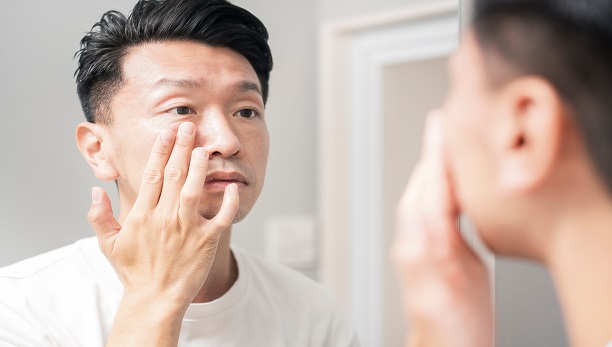
While many of us look forward to summer's warmer temperatures, the sun and heat can take a toll on our skin. But even though many types of skin conditions can flare up this time of year, you don't have to let them get in the way of your summertime fun. Summit Health dermatologist Dr. Mital Patel-Cohen offers several tips on how to treat and prevent the most common summer skin problems and keep your body's largest organ in top shape.
Acne
Hotter temperatures can create the perfect conditions for acne simply by making you sweat more. Dirt, oil, and other impurities are more likely to mix with the sweat on your skin and get trapped inside your pores, leading to breakouts.
To keep your skin free and clear of pimples, wash your hands regularly to avoid transferring acne-causing bacteria to your face. Throw your sweaty clothes in the laundry before wearing them again and make sure to choose oil-free skin products that won't clog your pores.
Dry, irritated skin
It's easy for your skin to get dehydrated in the sun, and for your face to feel dry and brittle, even if the air is humid. The same goes for spending time in chlorinated pools or air-conditioned indoor facilities.
Dr. Patel-Cohen offers the following tips for replenishing the moisture in your skin:
- Stay hydrated by drinking plenty of water.
- Slather your body with fragrance-free moisturizer immediately after bathing or showering.
- Always apply a moisturizing sunscreen before spending time in the sun. SPF 30 or higher is ideal.
Folliculitis
Sometimes what may appear as small pimples on your body are actually infected hair follicles, known as folliculitis. This skin condition can be caused by clogged pores, wearing tight clothes for too long after a sweaty workout, or even from spending time in hot tubs or whirlpools with poorly controlled chlorine levels.
The good news is that you can treat the infection at home with hydrocortisone creams, antibacterial lotions, and by applying a warm, wet cloth to the area. To help prevent folliculitis from occurring, shower as soon as you can after sweating and wear loose-fitting, light-colored cotton clothing in the heat.
Heat rash
When your sweat glands are blocked for a long time, you may develop small, itchy bumps that give you a prickly feeling when they burst. Essentially trapped sweat under the skin, this condition is called heat rash. The best way to prevent this is to minimize sweating, stay inside on hot days, and keep your skin cool with air conditioning, fans, and cold showers whenever possible.
Sun allergy
Some medications like pain killers or antibiotics may cause an allergy to the sun, leading to hives, itchy bumps or blisters, and red, scaly skin. Check the label on your medication to determine whether you should take extra care to avoid direct sunlight. While antihistamines and a cool compress can alleviate allergic reactions, you should always protect yourself from sunburn by wearing sun-protective clothing and using a broad-spectrum sunscreen with an SPF of at least 30.
Psoriasis
Psoriasis is a widespread skin condition that affects millions of people. It causes a build-up of skin that appears as a red, scaly rash on the elbows, knees, and other areas. While it generally improves in humidity and sunshine, there are some summer “frienemies” that can induce flare-ups. To defend against psoriasis, stay moisturized, avoid chlorinated pools, and don’t sit in the air conditioning for too long. Mild cases can also be improved with the use of topical creams and ointments.
